
Magento 2 Shop by Brand Extension: Setup In 10 Steps
Looking to enhance your online store's navigation? Magento 2 Shop by Brand extension creates dedicated brand pages for products. It helps customers easily find their favorite brands.
This tutorial will cover setting up and using Shop by Brand extension for your Magento store.
Key Takeaways
-
Understand the benefits of using a Magento 2 Shop by Brand extension.
-
Discover how to improve product navigation and brand visibility.
-
Find out how to increase customer loyalty with brand pages.
-
Explore top Magento 2 Shop by Brand extensions and their features.
-
Get a step-by-step guide to setting up Shop by Brand in Magento 2.
-
Learn how to optimize brand pages for better SEO performance.
What is a Magento 2 Shop by Brand Extension?
“A Magento 2 Shop by Brand extension improves store navigation. It creates dedicated pages for each brand.”
Customers can easily find products from their favorite brands. These pages display brand logos and descriptions. The extension adds a "Brands" section.
The extension adds a brand filter to layered navigation. It allows the creation of a brand slider, showcasing featured brands on various store pages. Customers can access all brands quickly. They can browse and filter products by brand. It enhances their overall shopping experience.
The extension boosts brand visibility in your store. Brand logos appear on listings. Brand info and logos on product pages. This reinforces brand identity at purchase. All in all, it increases customer loyalty to specific brands and leads to improved sales for branded products.
Benefits of Using a Magento 2 Shop by Brand Extension
1. Improved Product Navigation
You can organize products by brand for easier browsing. It helps customers find items from their favorite brands quickly. The extension adds a brand filter to your layered navigation.
For example, Helly Hansen's Magento store lets customers easily filter sportswear by brand. It improves the shopping experience for brand-loyal customers.
2. Enhanced Brand Visibility
The extension creates distinct brand pages to showcase products. You can display brand logos, descriptions, and featured items. It increases brand awareness and recognition in your store.
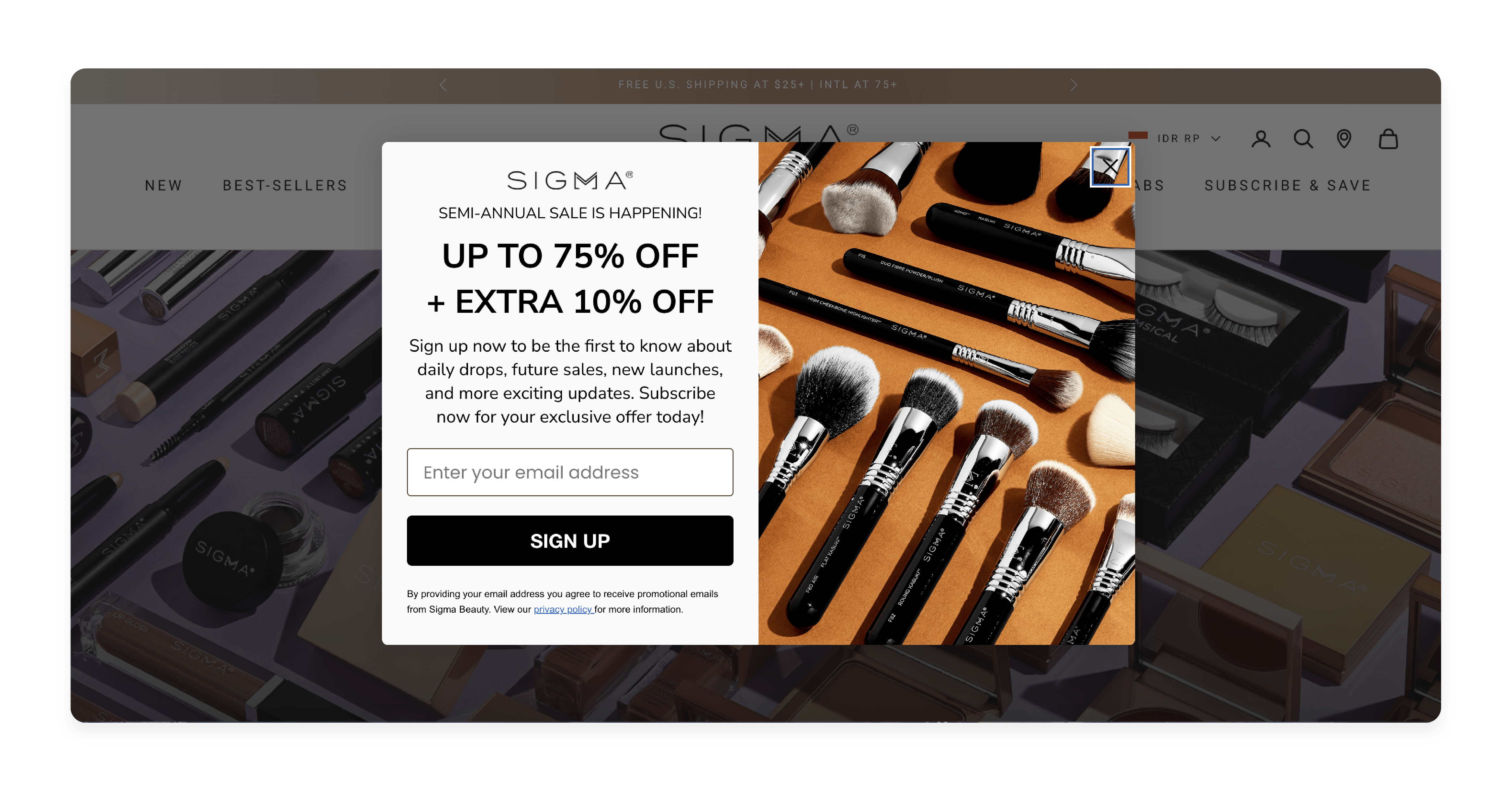
Sigma Beauty uses Magento to create visually appealing brand pages. These pages highlight their popular makeup brushes and increase brand visibility.
3. Increased Customer Loyalty
By making it easy to shop by brand, you encourage repeat purchases. Customers can quickly find and buy from brands they trust. It builds loyalty to both the brands and your store.
Liverpool FC's online store uses brand pages to boost fan loyalty. Supporters can easily find and purchase official merchandise.
4. Streamlined Product Discovery
A brand slider on your homepage showcases featured products/brands. It helps customers discover new brands and products. You can also create brand widgets for different store pages.
You can:
-
Browse all products from a specific brand.
-
Implement brand search for quick finds.
-
Create brand indexes or clouds for browsing.
-
Suggest related brands on brand pages.
-
Increase cross-selling with new brand discoveries.
Monin's Magento store features a brand slider on the homepage. It helps customers discover their wide range of syrups and drink mixes.
5. Improved SEO Performance
Brand pages created by the extension are SEO-friendly. You can optimize each page with unique content and metadata. It helps improve your store's search engine rankings.
Vizio's Magento store has well-optimized brand pages. These pages rank well for brand-specific searches, driving more organic traffic.
6. Simplified Brand Management
The extension provides tools to easily manage multiple brands. You can add new brands, update information, and control visibility. It simplifies brand management for your store.
It includes a central management dashboard. Administrators can bulk upload brand details easily. Products can be linked or unlinked quickly. You can also generate CSV data reports to inform decisions efficiently.
Nestle Nespresso uses Magento to manage its various coffee brands. They can easily update brand information and product listings.
Top 5 Magento 2 Shop by Brand Extensions Compared
| Name | Key Features | Price | Best For |
|---|---|---|---|
| Webkul Sell as Brand | - Separate seller and brand accounts - Brand-specific product pages - Brand profile management - Brand-wise order management - Brand rating and review system |
$99 | Marketplaces allowing sellers to create brand stores |
| Mageplaza Shop By Brand | - Responsive brand slider - Brand search box - Brand listing page - Brand information on product pages - Brand filter in layered navigation |
$109 | Stores needing a comprehensive brand management solution |
| Amasty Shop by Brand | - Dedicated brand pages - Brand slider with animation - Custom product sorting on brand pages - SEO optimization for brand pages - Integration with layered navigation |
$129 | Stores with a large number of brands seeking advanced customization |
| Aheadworks Shop by Brand | - 'All Brands' page - Individual brand pages - 'More from this brand' block - Featured brands widget - Integration with Layered Navigation |
$129 | Stores looking for a balance of features and simplicity |
| Mirasvit Shop by Brand | - A-Z brand filter - Featured brands slider - SEO-friendly URLs for brand pages - Brand logo on product pages - Brand description on product pages |
$199 | Stores focusing on SEO and brand visibility |
10 Steps to Set Up Shop by Brand in Magento 2
1. Install the Shop by Brand Extension
-
Go to your Magento 2 admin panel.
-
Navigate to System > Web Setup Wizard.
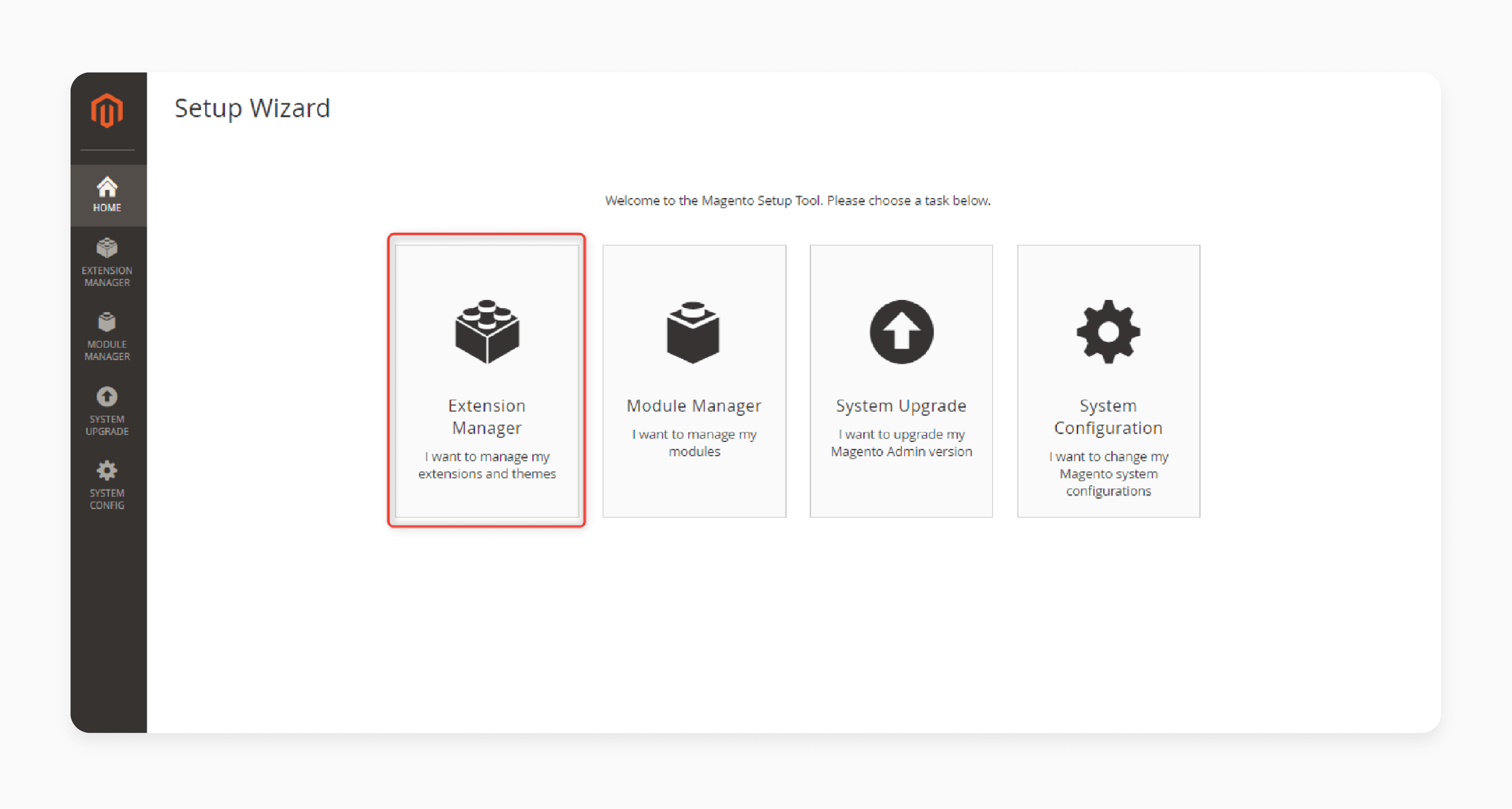
-
Select 'Extension Manager'.
-
Find and install the Shop by Brand extension.
-
Follow the installation prompts.
-
Clear cache and reindex after installation.
2. Configure General Settings
-
Go to Stores > Configuration > [Provider_Name] Extensions.
-
Select 'Improved Layered Navigation: Brands.'
-
Choose your brand attribute.
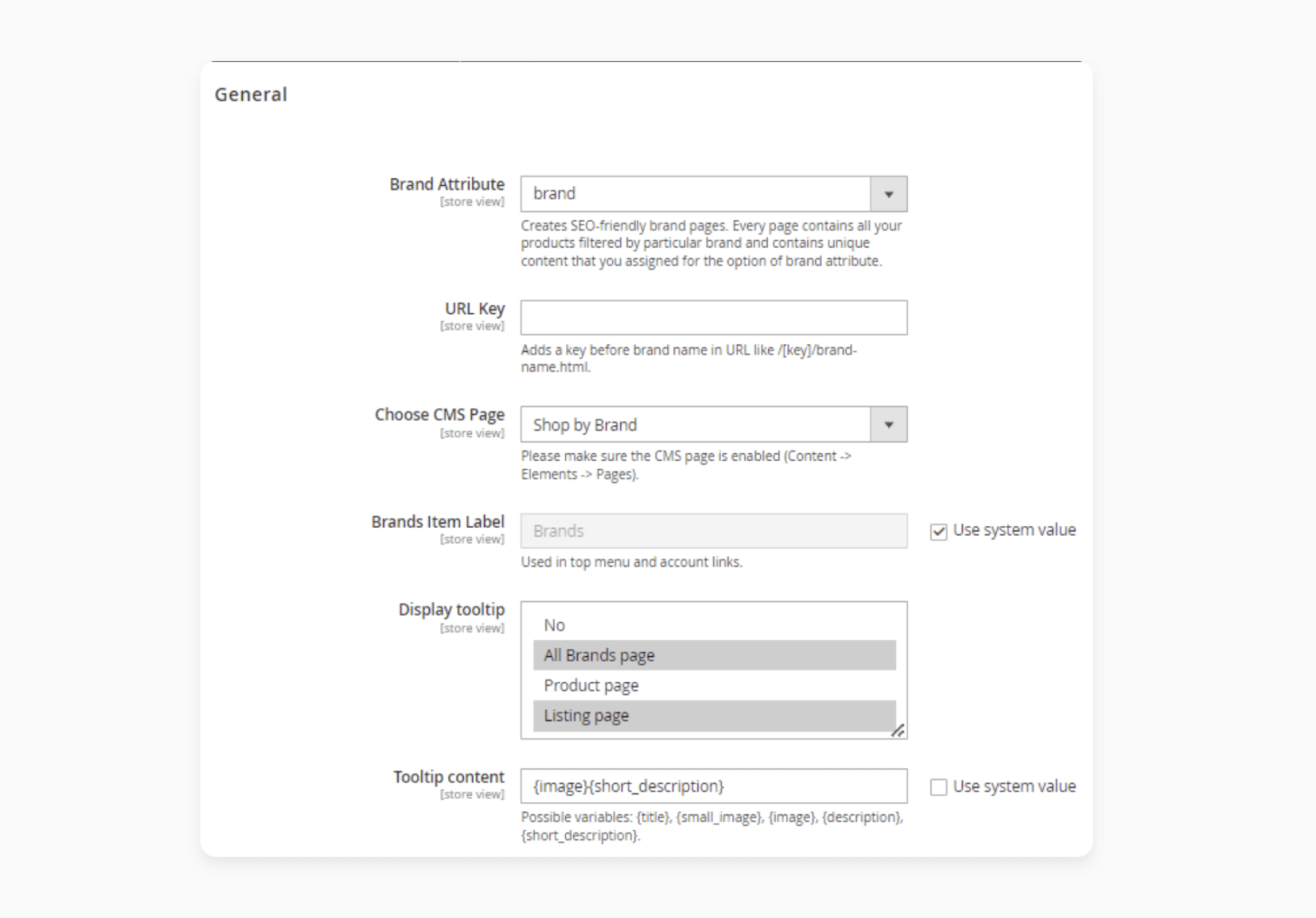
-
Set the URL key for brand pages.
-
Select the CMS page for the All Brands List.
-
Configure the Brands Item Label for menu display.
3. Set Up Brand Attribute
-
Navigate to Stores > Attributes > Product.
-
Find or create a brand attribute.
-
Set 'Catalog Input Type' to Dropdown or Visual Swatch.
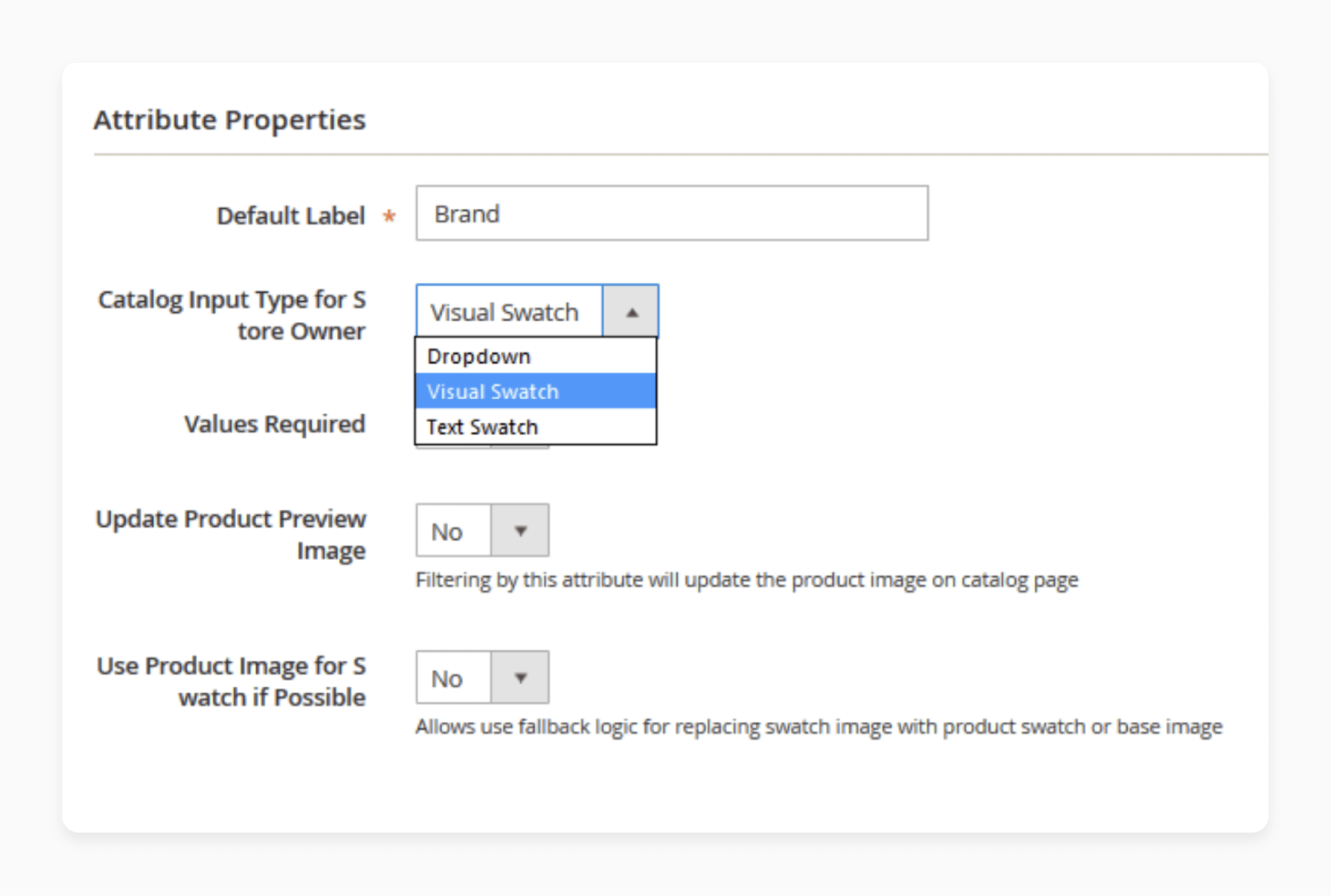
-
Enable 'Use in Layered Navigation'.
-
Add brand names and upload logos.
-
Save changes and reindex.
4. Create All Brands CMS Page
- Go to Content > Elements > Pages.

-
Click 'Add New Page'.
-
Set page title and URL key.
-
Use the WYSIWYG editor to add content.
-
Insert Brand List or Brand Slider widget.
-
Save and publish the page.
5. Customize Brand Pages
-
Go to Content > [Provider_Name] Layered Navigation > Brand Management.
-
Select a brand to edit.
-
Add custom descriptions and meta data.
-
Upload brand logos and banners.
-
Configure CMS blocks for top and bottom sections.
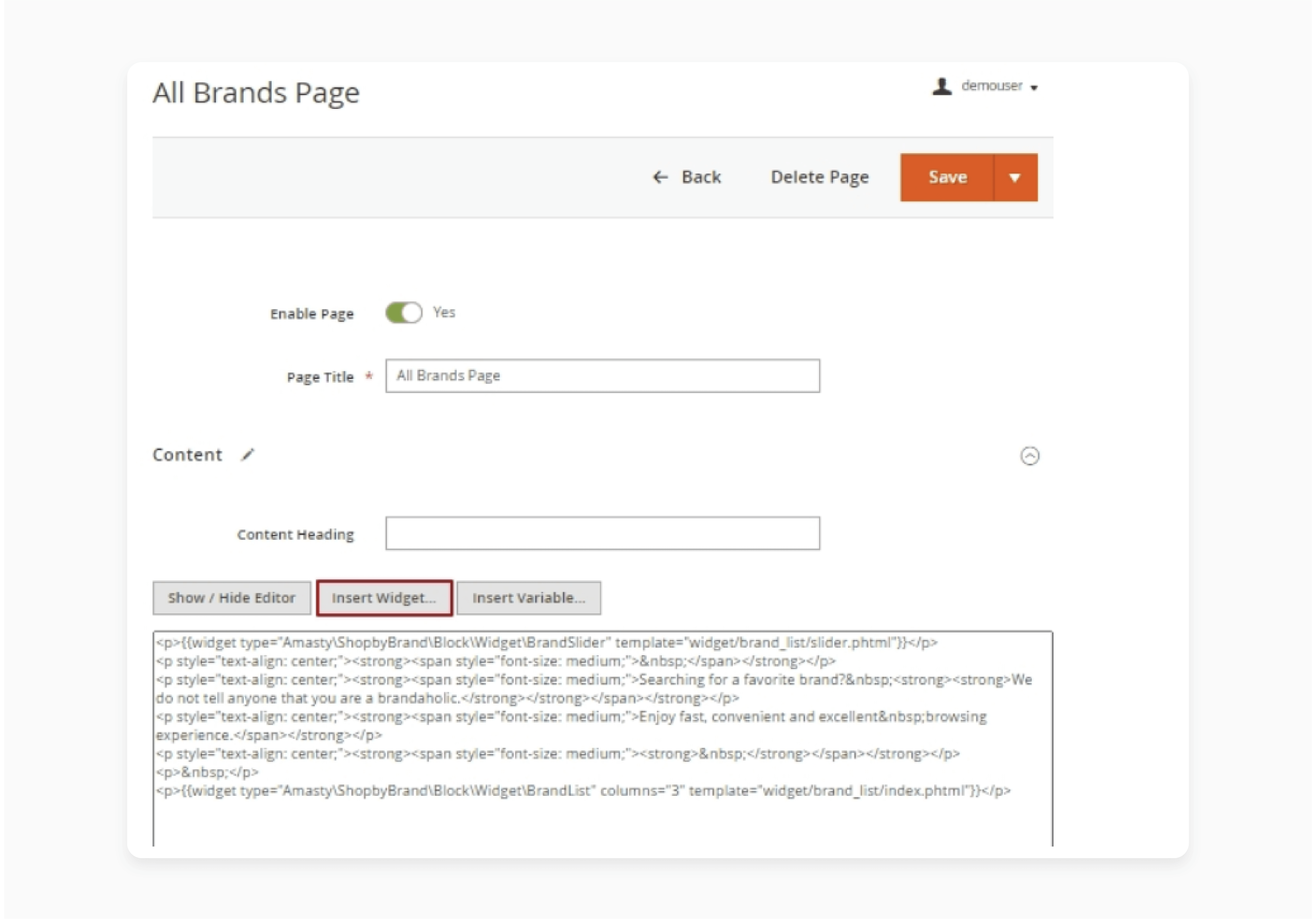
- Set a custom layout for each brand page.
6. Set Up Brand Slider Widget
-
Navigate to Content > Elements > Widgets.
-
Add a new widget of type 'Brand Slider.'
-
Configure slider settings (items, autoplay, etc.).
-
Choose where to display the slider.
-
Set slider design options (colors, sizes).
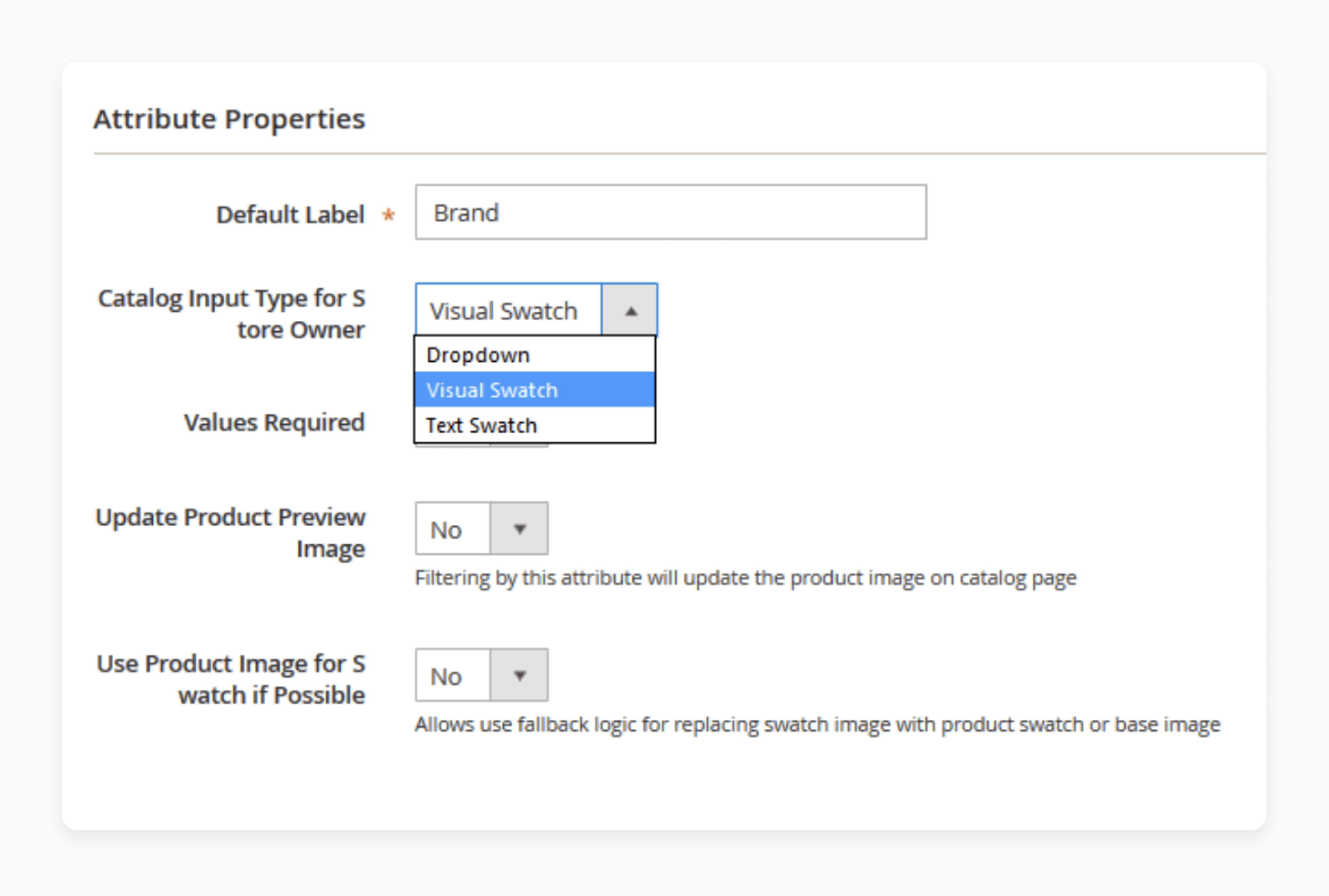
- Save and test on the frontend.
7. Configure Product Page Brand Display
-
Go back to Improved Layered Navigation: Brands settings.
-
Enable 'Display Brand Logo on Product Page.'
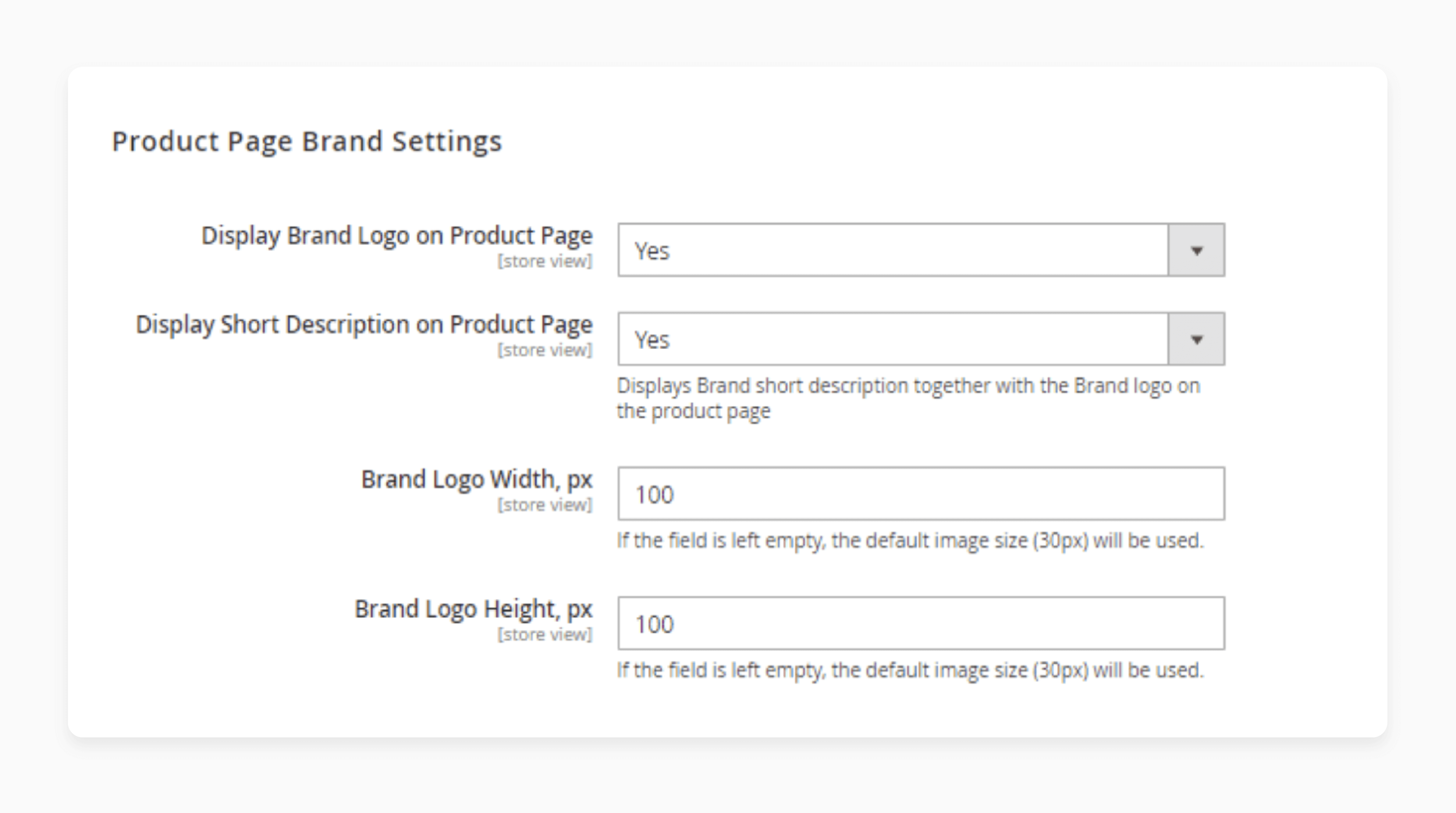
-
Set logo dimensions for product pages.
-
Choose to display a short brand description.
-
Save changes and check a product page.
8. Set Up Layered Navigation
-
Ensure brand attribute is set for layered navigation.
-
Go to Stores > Configuration > Catalog > Layered Navigation.
-
Enable 'Display Product Count' if desired.
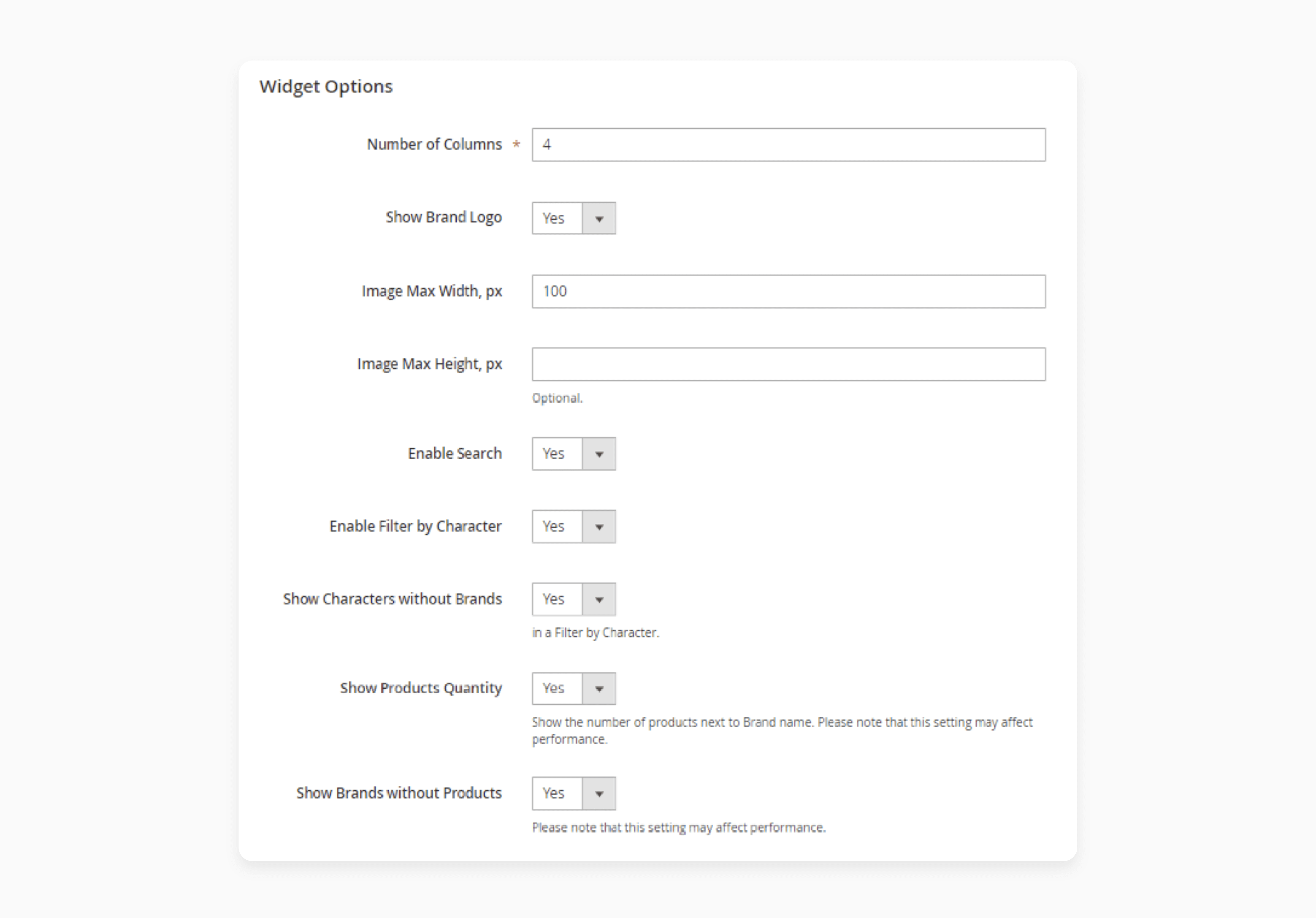
-
Set up any additional filter options.
-
Save and test filtering on category pages.
9. Optimize for SEO
-
Edit each brand in Brand Management.
-
Add unique meta titles and descriptions.
-
Create SEO-friendly URLs for brand pages.
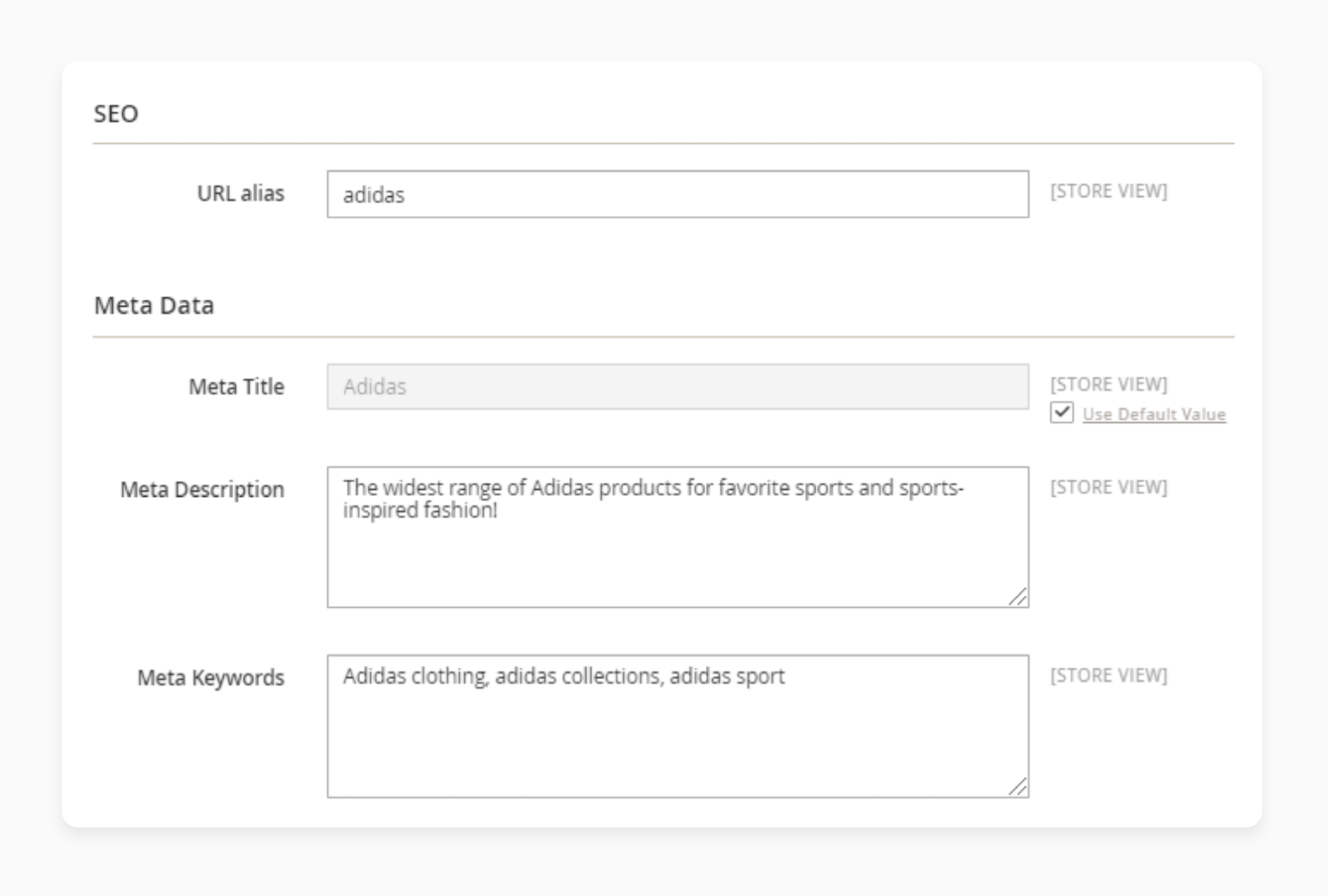
-
Add rich content to brand description fields.
-
Enable 'Exclude Brands without Products from Sitemap.'
10. Test and Refine
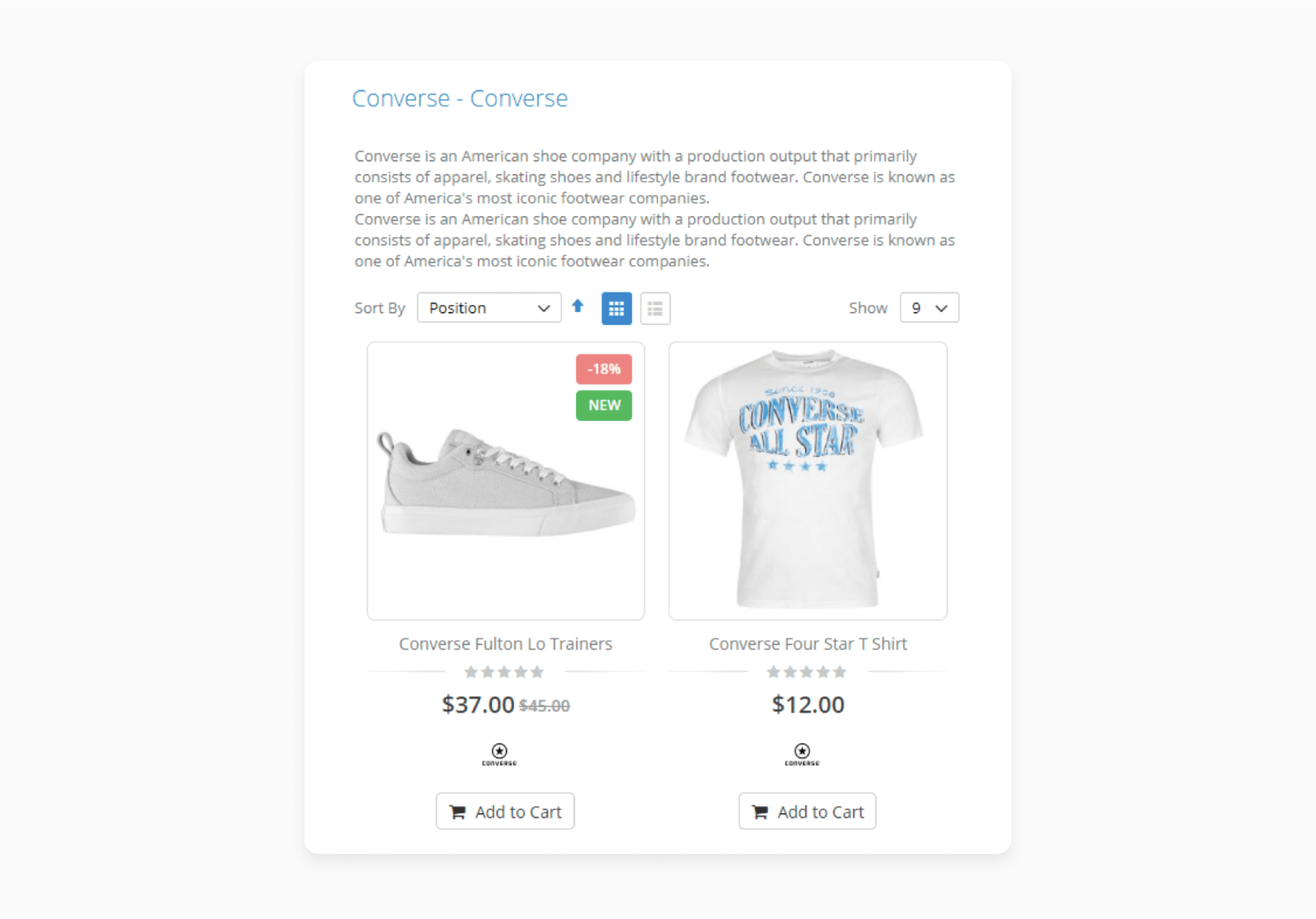
-
Browse your store as a customer.
-
Check all brand pages and sliders.
-
Test brand filtering in layered navigation.
-
Verify brand information on product pages.
-
Make adjustments based on your findings.
-
Monitor site performance after setup.
SEO Tips for Optimizing Magento 2 Brand Pages
1. Optimize Brand Page URLs and Metadata
-
Create SEO-friendly URLs for each brand page.
-
Include the brand name and relevant keywords.
-
Craft unique meta titles and descriptions for each brand.
-
Keep titles under 60 characters and descriptions under 160 characters.
For example, use a URL structure like "yourstore.com/brands/brand-name". Set the meta title as "Brand Name Products | Your Store." Write a compelling meta description highlighting key products or offers.
2. Create Unique, Keyword-Rich Content
-
Develop original, informative content for each brand page.
-
Include relevant keywords naturally throughout the text.
-
Add product descriptions, brand history, and unique selling points.
-
Use proper heading tags (H1, H2, H3) to structure content.
For instance, write a 300-500 word brand description. Include an "About the Brand" section with H2 tags. List popular products or collections using H3 tags.
3. Implement Schema Markup
-
Add schema markup to provide search engines with structured data.
-
Use "Brand" and "Organization" schema types for brand pages.
-
Include details like logo, social profiles, and contact information.
-
Implement the "Product" schema for featured items on the page.
You can use Google's Structured Data Markup Helper to generate code. Add the generated JSON-LD script to your brand page template.
4. Optimize Images and Use Alt Text
-
Compress brand logos and product images for faster loading.
-
Use descriptive, keyword-rich file names for all images.
-
Add relevant alt text to each image on the page.
-
Include the brand name in alt text where appropriate.
For example, name a logo file "brand-name-logo.jpg". Set its alt text as "Brand Name Official Logo." For product images, use "brand-name-product-type.jpg" as the file name.
5. Internal Linking and Navigation
-
Create clear navigation paths to brand pages from your homepage.
-
Add internal links to specific product categories and collections.
-
Include a breadcrumb trail for easy navigation.
-
Link to related brands or complementary products when relevant.
Add a "Brands" link in your main navigation menu. Include brand logos or names in your footer. On product pages, link back to the corresponding brand page.
FAQs
1. How does a Shop by Brand extension improve customer experience?
The Shop by Brand extension allows customers to find brands easily. It creates a separate page for each brand. Customers can browse and filter products by brand. It improves the shopping experience for customers. The extension helps customers find products they're looking for quickly.
2. What features does a Magento 2 brand extension typically offer?
A Magento 2 brand extension creates brand detail pages. It allows you to upload brand logos. The extension adds a brand filter to layered navigation. It creates a Shop by Brand page. You can style the brand pages uniquely.
3. How does a Shop by Brand module benefit store owners?
The Shop by Brand module allows you to sell by brand. It helps organize products in your Magento store. You can create a separate page for each brand. The extension allows you to showcase different brands. It can increase sales of branded products.
4. Can customers easily find products using the Shop by Brand extension?
Yes, the extension helps customers find products easily. It allows customers to browse and filter by brand. Customers can find brands using a brand slider. The extension creates brand detail pages for easy navigation. It improves product discovery in your Magento 2 store.
5. How does the Shop by Brand extension integrate with Magento 2?
The extension is compatible with Magento 2 stores. It integrates with the layered navigation extension. The module works seamlessly with existing Magento 2 features. It allows you to manage brands using Magento 2 admin. You can configure the extension in your Magento 2 store.
6. What customization options does the Shop by Brand extension offer?
You can style the brand pages uniquely. The extension allows you to upload brand logos. You can create a separate page for each brand. It lets you customize the shop by brand page. You can add product questions to brand pages.
7. How does the Shop by Brand extension help with product organization?
The extension creates a separate page for each brand. It allows you to organize products by brand. You can associate products with specific brands. The extension helps categorize products more easily. It improves product management in your Magento 2 store.
Summary
Magento 2 shop by brand improves store navigation by creating individual pages for each brand. Here are the tutorial’s key highlights:
-
The Shop by Brand extension boosts brand visibility and customer loyalty. It can lead to improved sales for branded products.
-
Top extensions offer features like brand sliders and SEO. Prices range from $99 to $199 for different needs.
-
Setting up involves installing and configuring the extension. Customize brand pages and optimize for better user experience.
-
SEO optimization includes creating unique content for brand pages. Implement schema markup and optimize images for better rankings.
-
Additional features like extension-wide integration and custom sorting are available. These enhance the mobile experience and product presentation on brand pages.
Choosing Managed Magento Hosting services aids store owners and shoppers with 24/7 extension setup assistance.




